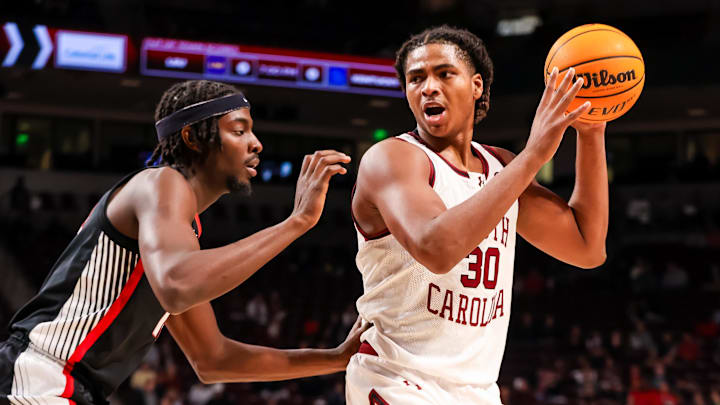The Toronto Raptors used the No. 9 overall pick in the 2025 NBA Draft to select Collin Murray-Boyles, a versatile forward out of South Carolina. An unconventional big man with a strong frame, high motor and impressive playmaking instincts, Murray-Boyles brings an intriguing all-around skill set that fits well with Toronto’s evolving identity (and history of making the most of gifted positional tweeners).
With the first round of the draft concluded and Murray-Boyles standing as the team’s lone selection, here’s an updated look at the Raptors’ depth chart heading into the 2025-26 season:
Position | Starters | Bench | Second Bench |
|---|---|---|---|
PG | Immanuel Quickley | Jamal Shead | |
SG | RJ Barrett | Gradey Dick | |
SF | Scottie Barnes | Ja'Kobe Walter | Ochai Agbaji |
PF | Brandon Ingram | Collin Murray-Boyles | Jamison Battle |
C | Jakob Poeltl | Jonathan Mogbo | Colin Castleton |
Raptors post-draft depth chart leaves plenty of questions to be answered
The Raptors are, plainly, a team full of question marks. On paper, the starting lineup is solid: Immanuel Quickley and RJ Barrett form the backcourt, Scottie Barnes remains the centerpiece on the wing and Jakob Poeltl holds down the middle. Brandon Ingram, a midseason acquisition last year, still hasn’t made his debut in a Raptors uniform — his recovery from what’s jokingly been called the longest ankle sprain in NBA history kept him sidelined through the end of 2024-25.
The bench offers a mix of youth and upside. Gradey Dick leads the second unit after taking a significant step forward, averaging 14.4 points and 3.6 rebounds on 41/35/86 shooting splits in nearly 30 minutes per game. Rookie Ja’Kobe Walter impressed in stretches, putting up 8.6 points in limited minutes and earning more playing time down the stretch.
Murray-Boyles is expected to come off the bench to begin his rookie year, but he checks all the boxes of a rotation-ready contributor. He averaged 16.8 points, 8.3 rebounds and 2.8 combined steals and blocks (stocks) for South Carolina, showcasing his activity around the rim and defensive instincts. His ability to contribute without needing the ball in his hands gives Toronto a physical, plug-and-play option in the frontcourt. Opportunity may be knocking sooner than expected.
Do Raptors have enough to contend in wide-open East?
With Boston, Milwaukee and Indiana all dealing with major injuries to key players, the Eastern Conference could see a temporary power vacuum. That gives teams like the Raptors — previously focused on long-term development — a real chance to climb back into the playoff picture. The core is semi-young, the roster has a higher ceiling than last year and the addition of Murray-Boyles only strengthens the rotation.
But there’s one obstacle that can derail it all: injuries.
Toronto battled health issues all season, derailing any momentum before it started. Quickley played in only 33 games. Barrett appeared in 58. Dick played just 54, and even the durable Barnes only managed 65 games. The team cycled through 23 different players who logged at least four appearances, contributing to their disappointing 30–52 record.
Now, the focus must shift to consistency and health — two things Toronto desperately lacked. If the Raptors can keep their rotation intact and give Murray-Boyles a real shot to grow, they may finally start moving forward. If not, the rebuild risks stretching even longer.
